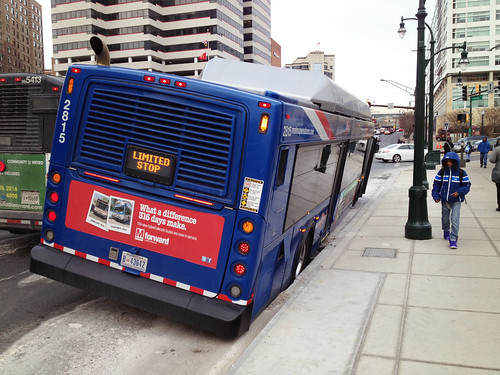More than 150 people gathered in the auditorium of John Champe High School Monday night to learn more about the state’s plans to build a new highway across Loudoun and Prince William counties.
For most in the room, there were more questions than answers, even for program organizers—longtime critics who have been fighting the project they call the Outer Beltway in its many forms since the late 1980s.
The latest version is the Commonwealth Transportation Board’s designated Corridor of Statewide Significance, called the North-South Corridor, which would link I-95 to near Dumfries to Rt. 7 east of Leesburg. Options to develop a four- to six-lane road that would provide a new western access to Dulles Airport has been under study for the past year.
In Prince William County, detailed planning already is under way to extend the Prince William County Parkway from its I-66 terminus to Rt. 50 in Loudoun, including a Manassas Battlefield bypass that would have north-south traffic skirt the western edge of the national park along Pageland Lane and Sanders Lane. That road would link to Northstar Boulevard and then to Belmont Ridge Road in Loudoun. From there, an eastern spur, either along Rt. 50 or to the north, would move traffic to Rt. 606 and Dulles Airport.
In Loudoun, communities have already gotten communication from VDOT about studies that will be conducted between through April, including ones for wetland delineation, noise monitoring, culture resource surveys such as shovel tests, soil samples and/or hazardous waste investigations, according to a letter received by the Brambleton Group.
The Brambleton Community Association has already taken action to oppose the alternative that would bring the limited-access highway through the southern part of the community.
“The Board took this action because they feel that the construction of this highway will have long lasting and negative impacts on our community,” Brambleton General Manager Rick Stone said in a letter to residents. The letter goes on to note a limited-access road could reduce property values, increase noise related to truck traffic, negatively impact the environment and change future planned uses for the property included in the study area.
“The BCA Board believes that VDOT should focus their study to the existing right-of-ways along Route 50 (already planned as a limited access road) and on the airport property for which the road will serve,” the letter reads.
Piedmont Environmental Council President Chris Miller and Coalition for Smarter Growth Executive Director Stewart Schwartz told the audience Monday night the project, with a price tag that could exceed $1 billion, would do little to reduce commute times or spur job growth. They also questioned a key underpinning of the state’s push build the road, dismissing as “overstated” the claims that the highway was needed to accommodate growing cargo shipments at Dulles Airport.
Residents wanted to know more about the specific alignments the road would take and how their properties and their neighborhoods would be impacted.
“I don’t think they know and I don’t think VDOT will tell you,” Miller said. “But you should start asking.”
Also making presentations during the session were John Hutchison of Aldie Heritage Association and Charlie Grymes, chairman of the Prince William Conservation Alliance.
Hutchison raised concerns that the highway would undermine efforts to create a rural experience that would attract tourist seeking to escape urban environments. The project was cited as the association’s top concern by members during a recent meeting, he said.
Grymes said the North-South Corridor project would do little to create new jobs in Prince William County and would conflict with the county’s strategic plans. “We should invest where we can grow jobs,” he said, adding that focus should be in the I-95 and Rt. 1 corridors at the eastern end of the county. “If you spend your money on a dumb road you don’t need, you don’t have any left,” he said.
VDOT planners held two community open house meetings on the project in Loudoun and Prince William just before Christmas and the public comment period ended Jan. 18. Representatives from VDOT, the Department of Aviation, Department of Rail and Transportation and Metropolitan Washington Airports Authority are formulating recommendations for the Commonwealth Transportation Board.
Photo courtesy of Leesburg Today







